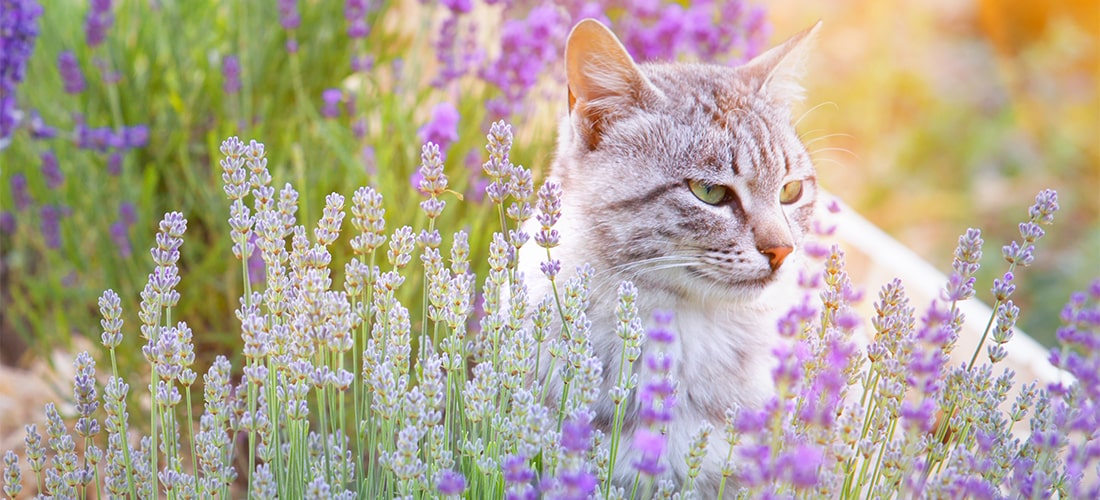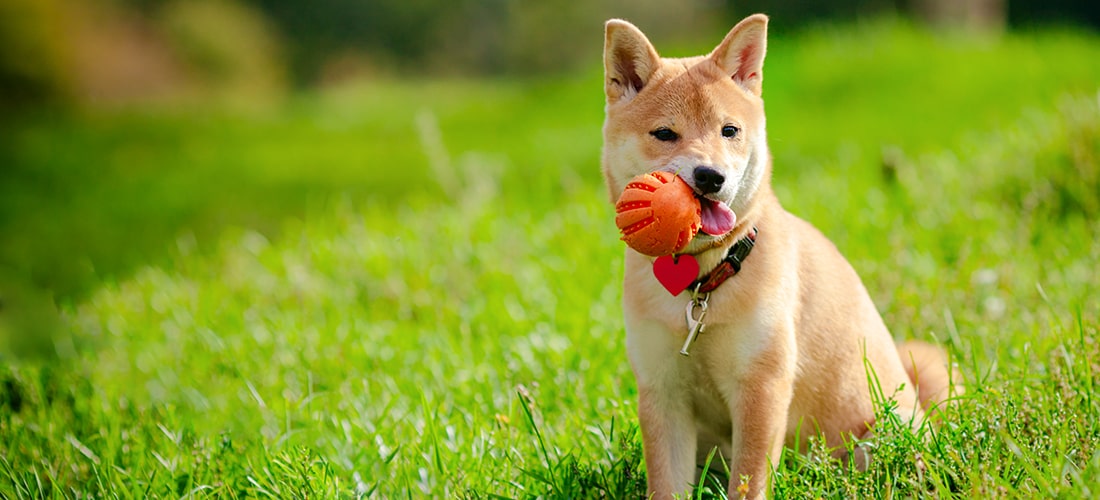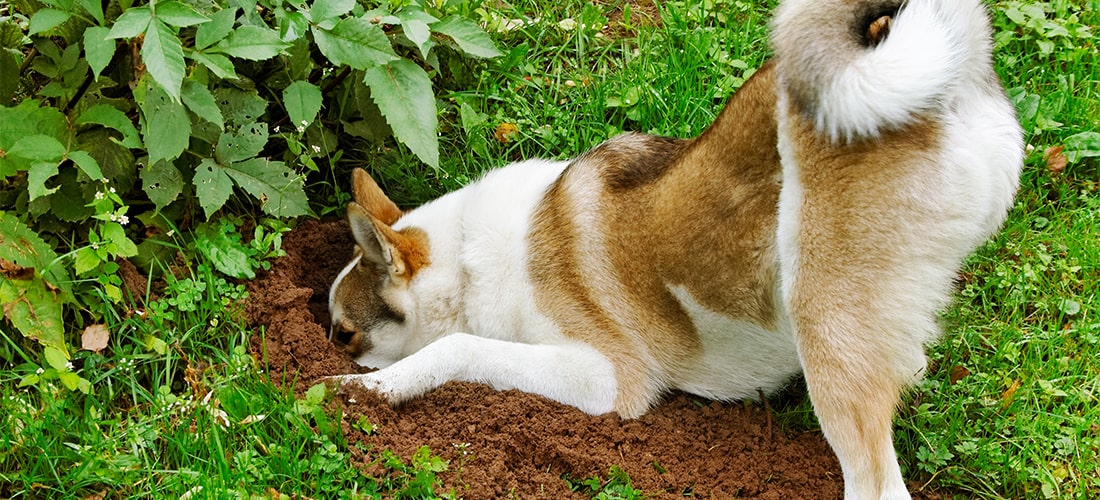Pet-friendly gardens
Sunny weather, longer days...it's the perfect time to spruce up your garden. But have you thought about how to make it safe and fun for your pets?
Here are ten tips from our vets and nurses on creating a paw-fect garden paradise:
1. Avoid poisonous plants

Some of our most common garden plants are actually really toxic to pets. It's always good to check if a plant is pet-safe before growing it in your garden. Avoid things like:
- daffodils
- crocuses
- tulips
- azaleas
- laburnum
- lilies
- lily of the valley.
Read our poisons guide to find out which plants to keep away from pets.
2. Pet-friendly paths
Paved paths are best for pets. stones and gravel can hurt their feet or get stuck between their paws. Some dogs might pick up stones and accidentally swallow them.
Paved paths can also help keep your pet's nails nice and short by naturally wearing them down. This can save you grappling with your buddy to trim their claws.
3. Natural pest control
Pests like slugs and snails can be the bane of a gardener's life. Before you reach for the chemicals, remember that pesticides are also extremely toxic to pets and other wildlife. It is always kinder to avoid using chemical pesticides. If you do choose to use them it's essential to keep your pets away from the area for several days. Also, you will need to consider the impact on other people's pets or wildlife as they wander through your garden.
Here are some natural alternatives you can try instead:
- Crushed egg shells help keep slugs and snails away from your plants.
- Hollowed-out grapefruit skins can be used to trap bugs.
- Humane traps can help to get rid of mice and rats without using poison.
- Hedgehogs and birds will gobble up slugs, snails and insects. Attract birds with a bird feeder. You can encourage hedgehogs to visit by creating places for them to sleep and safe routes into and out of your garden.
4. A strong, secure fence
A good fence can help keep your pet safe and secure in the garden. Make sure it's in good repair. Your pet might be able to squeeze through any gaps or holes and go on an unwanted adventure!
Your fence needs to be tall enough that your pet can't jump over it. Dogs and rabbits might be able to dig under your fence so check regularly for escape tunnels.
A good fence will also help to keep out predators like foxes. This will help keep small pets and chickens safe. consider creating a 'nature highway' for wildlife in your garden – safe routes into and out of your garden. This helps animals like hedgehogs access more food and shelter when up against tough times.
5. A great lawn

A large lawn gives you plenty of space to play games with your dog. A game of fetch will really help keep them in shape and stop them getting bored or stressed. Always use pet-safe toys and don't throw balls that are small enough for your dog to swallow. Avoid throwing sticks for your dog to chase – these can cause some really nasty injuries.
Don't forget, your dog will still need their daily walks. Games are great but they can't replace a good stretch and a sniff outside the home. Find out how much exercise your dog needs.
6. Be careful with grass seeds
If your lawn needs a spruce up you might spread grass seed on it. Unfortunately, these pesky little seeds can get into your pets eyes, ears and between their toes. Their shape means they can burrow deep into the skin. Some pets even need surgery to remove grass seeds that have got lodged somewhere they don't belong! Keep pets away from a freshly seeded lawn for at least a few days.
7. A peaceful pond
Ponds are great for wildlife and can turn your garden into a haven for frogs, newts and all kinds of insects. However, they can sometimes by a hazard for curious pets. Keep your pets out of harm's way by fencing off your pond or fitting a guard over the top.
8. Shady spots for summer days
Pets can easily overheat on warmer days so make sure there are plenty of shady spots for them to relax in. Trees and large shrubs create great shade but you can also set up shelters or drape sheets over the end of an exercise run for smaller pets.
9. A dedicated digging spot

Is your dog a digger? It can be a pain if they're constantly digging up your borders or ruining your perfectly landscaped lawn.
Try giving your dog a 'dig-pit', which is an area of soil that's just for them to dig in. It could be in the border, in a large plant pot or child's sand pit. Rabbits also have a natural strong drive to dig. Building a 'dig-pit' for your rabbit will keep them entertained and happy. Encourage pets to dig in this spot and give them plenty of treats and praise when they do it right.
10. Clear up their poo
If you have cats and dogs, it's important to clear up any poo you might find in the garden. It's good to let them go to the toilet when they need to, but leaving poo lying around could cause health problems for other pets or humans in your home. Kitty visitors might also leave poo presents mixed into the soil, so always wash your hands after gardening.
Watch our video for even more helpful tips!
 Video found at youtu.be/eRvr0MbYOTk
Video found at youtu.be/eRvr0MbYOTk
Poisons and hazards
Read our vets' guide to these hidden hazards and help keep curious paws out of harms way.
Read moreExercise for dogs
All dogs need daily exercise to stay happy and healthy. Find out how much exercise is best for your dog.
Read morePet care in Summer
Beat the heat with our vets’ advice about how to keep your pets cool this summer:

